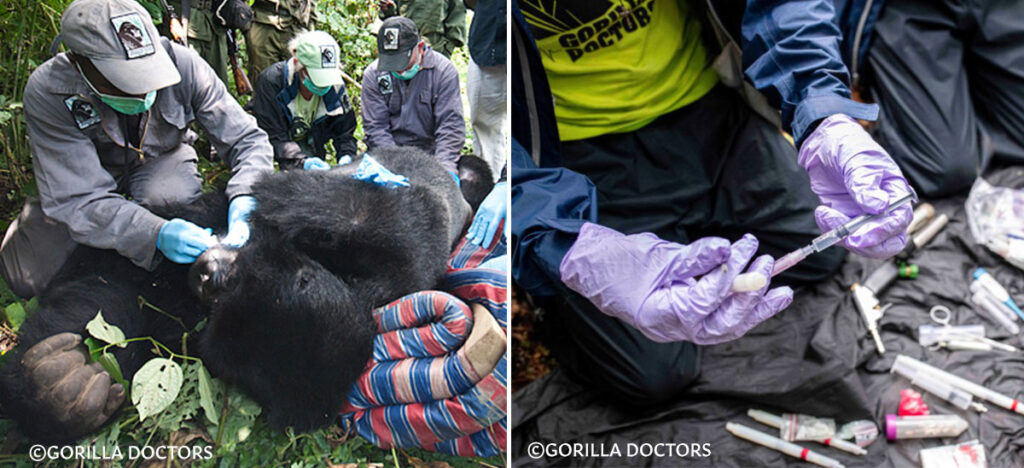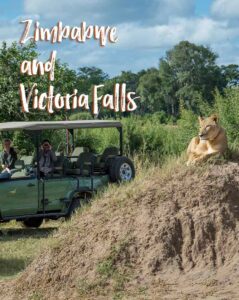Gorilla and Chimp Tracking in Uganda & Rwanda - Safari Expert Harsh Patil Comes Face to Face with Primates.
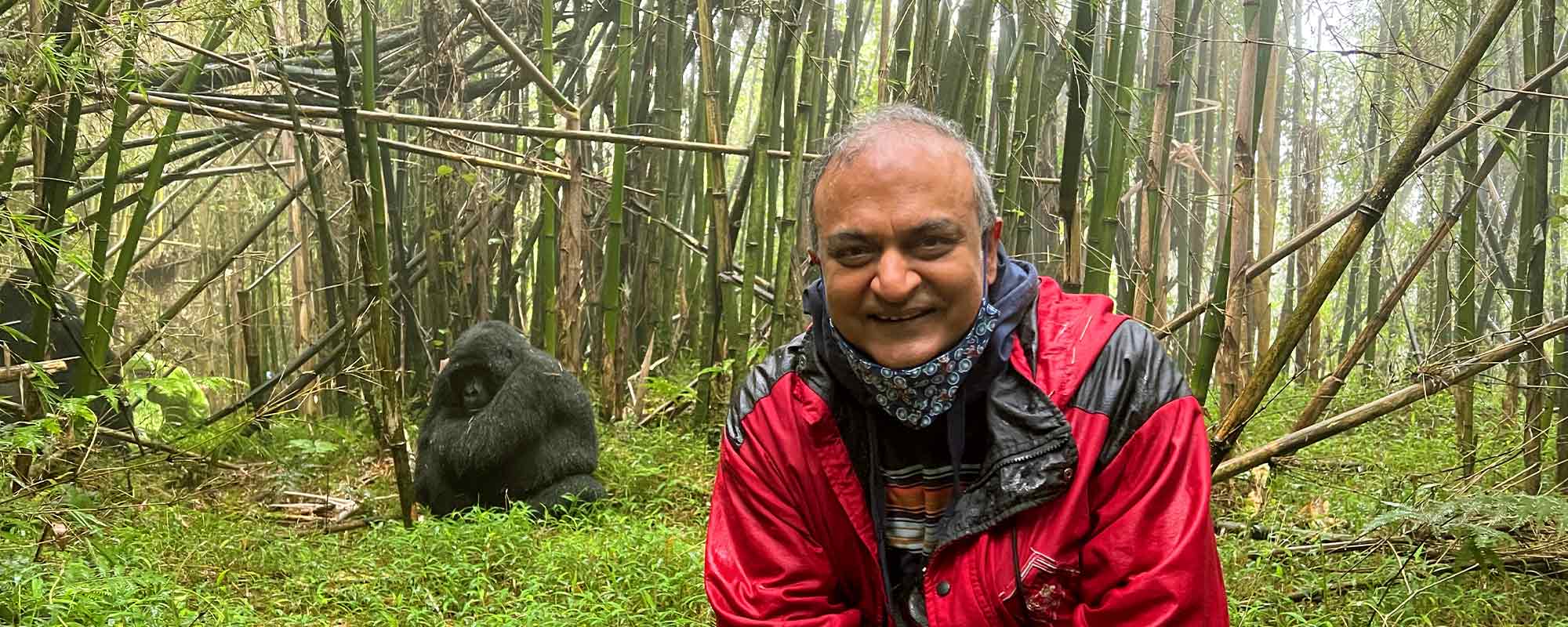
Harsh Patil, Founder of xplorearth, embarked on a life-changing journey to Uganda and Rwanda in 2023. In this interview with travel writer, Lavanya Sunkara, he shares personal experiences of his remarkable treks through Bwindi Impenetrable Forest and Volcanoes National Park. Here, he witnessed the majestic mountain gorillas and offered insights into the circumstances that led to him being the only person in the middle of Kibale National Park in the presence of a chimpanzee family.
Keep reading to find out how you too can have a once-in-a-lifetime experience of seeing our closest relatives in the wild, and help support conservation and communities along the way.
LS: Whether wildlife lovers are already dreaming about a gorilla or chimpanzee trek, or never considered it before, why do you think a primate safari is a quintessential experience?
HP: We are extremely similar to chimpanzees in both our nature and social behavior. People say, “Oh, chimpanzees are just like humans”. Well, it’s quite the opposite, actually. We are just like them. DNA studies prove that humans are nearly identical to two primate species: chimpanzees and bonobo monkeys. Going on a chimp or gorilla trek is unique because we can see ourselves in the mirror and appreciate our own evolution.
It is truly amazing – adult gorillas are nurturing and very protective of their family. Mothers and aunts are very caring of their young, cuddling is endemic and the love between them clearly evident.
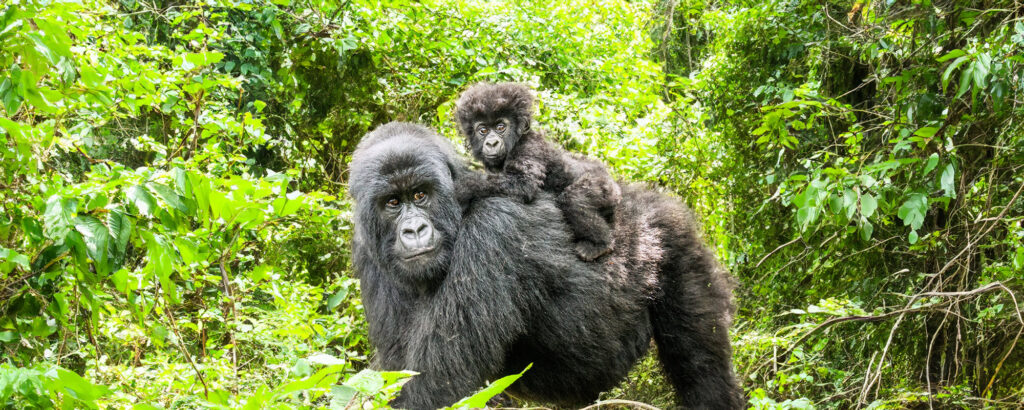
Primates display the same mannerisms as humans. I’ve seen them yawn, scratch their heads, ponder, groom each other and even laugh heartily!
On my most recent trip, I saw a chimpanzee slither down a tree, butt first, and halfway down, he turned around and started clapping as if to congratulate himself! We were awe struck by how this individual used a quintessential human gesture. Nobody taught him this. It was innate, heart-warming and an “Aww” moment. Observing these primates in their habitat was one of my finest wildlife experiences.
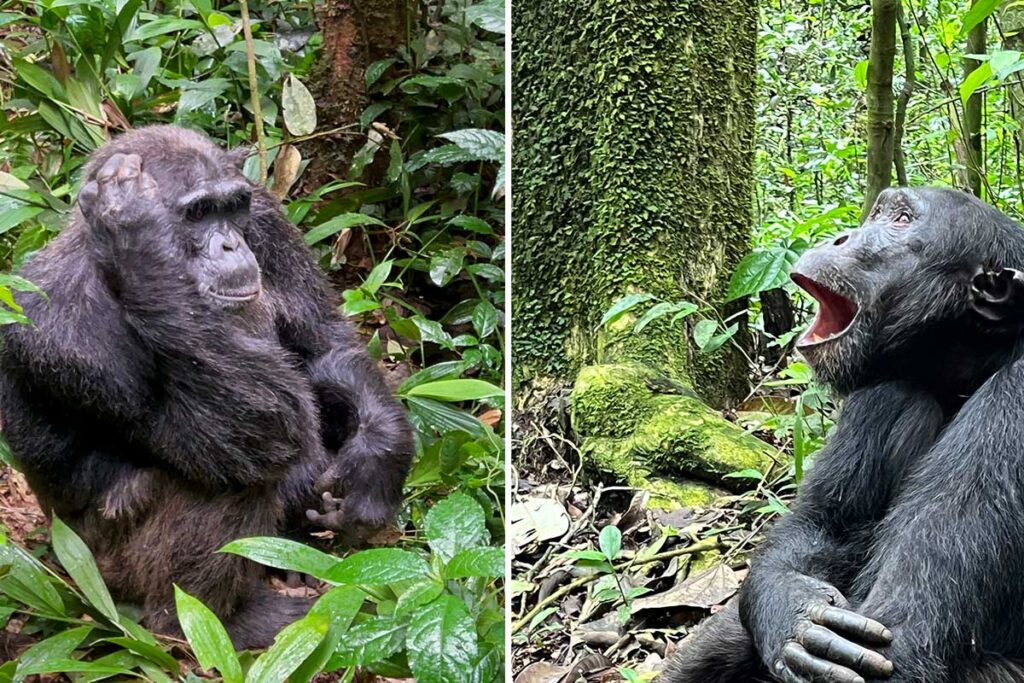
LS: What was it about your Gorilla and Chimpanzee tracking experience that made it so special?
HP: On an African safari, you can see big cats, their prey and myriad birdlife, but gorilla and chimp tracking is so special because you can get within spitting distance – 10 to 15 feet. You can hear them burp, see them scratch and groom each other and even fart! All of those things are extraordinarily human, and you get to experience that within very close proximity (safely, of course). Gorilla or chimpanzee tracking is the crowning glory of all safari experiences in Africa. If you love nature, outdoors, and wildlife, it’s something you absolutely must do, at least once in your lifetime.
When I visited Kibale National Park in Uganda, I ended up getting a private tracking experience. The group I accompanies turned back within minutes because of dewy conditions and slippery trails. In a tropical forest such conditions are the rule not the exception. So, lo and behold, I was in the middle of a jungle with just the ranger and guide all to myself. Soon, we came upon a family of chimps. I maintained a safe distance and they were comfortable in my presence, so much so that the little babies came and tapped me on my thigh, as if they were playing tag. Their mother was not too thrilled, so they scampered back to her, only to return a few minutes later to tap me again. They wanted to play, just like human children! Their mother eventually felt the need to run a safety check, so she walked right past me. She then turned around, this time bumping me as I stood transfixed, before walking back to her nest in the dense foliage. I sensed acceptance and it brought tears to my eyes.
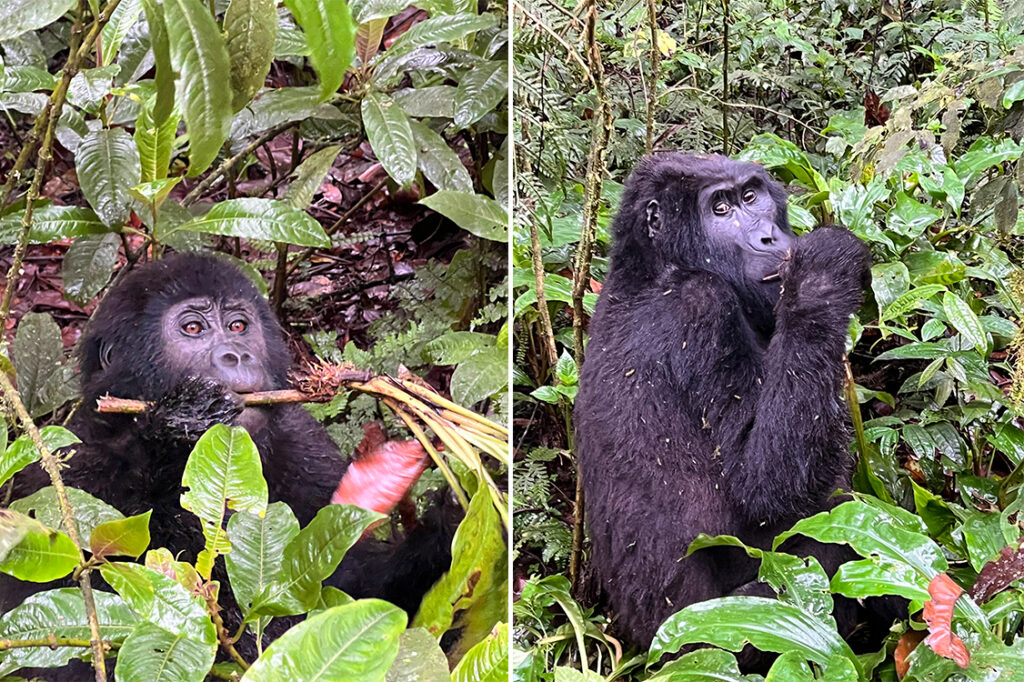
HP: It didn’t end up raining that day; and the three of us covered significant ground over a two hour period and encountered three chimp families. The younger ones were so jovial, throwing fruits from the high branches, cackling as they shimmied down to us, while the older patriarchs patiently surveyed the scene.
LS: When I went gorilla tracking in Rwanda, I felt like I was traveling back in time. You don’t get that every day and it’s such a wonderful feeling!
HP: It sure is! You just stand still and take in the silence, even as you hear all the heaving of the jungle, the birds and the tiny rivulets water. When you get close to the gorillas, there’s no other sound, as if the universe is immersed in the presence of these magnificent beings. Your mind goes into a trance in that deafening silence. The gorillas feel safe, going about their routines as lords of the jungle and do as they please. This was once the way of the world and how it is meant to be.
LS: Mountain gorillas, a subspecies of eastern gorillas, are endangered. How does tourism help in the conservation of these endangered mountain gorillas?
HP: Any avid wildlife lover knows of Dian Fossey or Jane Goodall. These pioneering women raised awareness about studying and protecting these great apes more than 50 years ago. Their populations were much larger than today, but sadly consistent poaching, deforestation, and habitat loss has led to significant losses. In the last decade, concerted conservation efforts and increased appreciation helped bring mountain gorilla numbers up from as low as 400 to more than a thousand strong.
Mountain Gorilla tourism is a positive factor in the conservation success of Gorillas in Uganda and Rwanda. The revenue generated through eco-tourism here helps not only the governments and the conservation groups but, most importantly, the local communities. If the local residents have an alternate means of livelihood including food, education, and medical care, they don’t need to fall back on poaching on behalf of criminal prize hunters.
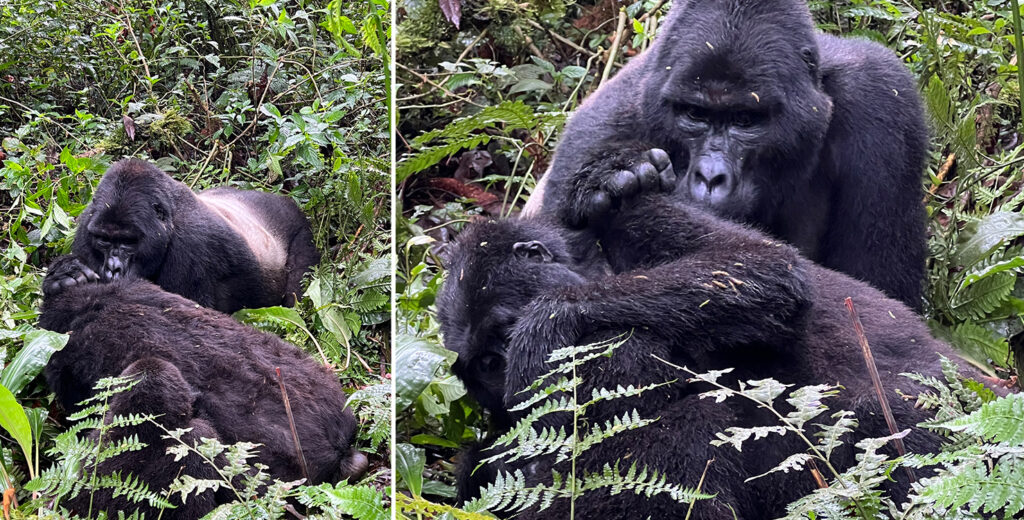
While Gorilla and Chimp treks are sought after experiences in Africa, tourism in these places cannot be scaled like a Disney amusement park, where thousands of people trudge up the mountains to see the gorillas. That would destroy the balance and primate habitat. It has to be controlled. Thankfully, Gorilla viewing opportunities in Uganda and Rwanda are extremely well regulated, with limited permits per day that need to be acquired well in advance.
LS: Is Gorilla tracking better in Uganda or Rwanda?
HP: Mountain gorillas reside in three neighboring countries: the Democratic Republic of the Congo (DRC), Uganda, and Rwanda. Their ecosystems are similar across these countries, as their habitat is all part of the same Virunga Massif. Uganda has more than 50 percent of all of the mountain gorillas in the world, far more than Rwanda. While Rwanda is infrastructurally advanced compared to Uganda — in terms of their roads, airports and flights – Uganda has five different locations, as opposed to just one location in Rwanda (Volcanoes National Park) to witness gorillas in the wild.
Uganda’s Bwindi Impenetrable Forest National Park has four sectors where you can find habituated gorillas. The term habituated means they are acclimated to humans. Rushaga, which is part of Bwindi, has 11 habituated families, one of which is 18 members strong. Visitors to Uganda can also choose different areas based on factors like ease of locating gorillas, difficulty level of the treks, and proximity to airports and luxury accommodations.
Another reason I find Uganda more appealing is because of the high number of chimpanzees. In the Kibale Forest National Park in the north of the country, there are far more chimps than in Rwanda, and they are far easier to track down than in Rwanda’s Nyungwe National Park.
Both countries offer high-end luxury lodges as well as budget accommodations. The benefit of Uganda is that you don’t get as many people visiting like in Rwanda. As a result, your group sizes tend to be smaller and chances are you may have gorilla family all to yourself!
But you don’t have to pick just one destination! Since these two African countries share a border, you can visit both countries. Go gorilla tracking in Volcanoes National Park in Rwanda, cross into Uganda by road to see gorillas in either Bwindi Impenetrable Forest or Mgahinga National Park, and add a chimpanzee trek in Kibale National Park as icing on the cake.
LS: How much does a gorilla trek cost? Are there differences in cost between Uganda and Rwanda?
HP: Gorilla trekking in Rwanda comes at a hefty price tag of $1,500 per person, per trek. It is significantly less in Uganda. It could be anywhere from $900 to a discounted rate of $700 per person. So it’s about half the cost in Uganda. The extra savings could go towards spending an additional night, flying instead of driving from one place to the other, or combining the gorilla experience with the chimpanzee trek. I advise people to go on two treks. You will see different families and witness varied behavior. Some may have more silverbacks, others may have babies.
People tend to gravitate to Rwanda more than Uganda, maybe because they think that Uganda is not as safe as it borders the DRC. But I find both countries are very similar. It’s the same people, same language, same culture.
LS: What if somebody wants to do the gorilla trek, but is afraid of what it takes physically?
HP: I think anyone can do this! The infrastructure around these parks is designed to help everybody get to a gorilla family. You will be with guides and the rangers, but you also have the option of hiring your own porters. These porters ($20 per person) will help carry your stick, your water, your backpack, and, in steeper and slippery terrain, they’ll literally lift you up and carry you up the mountain. If there’s somebody with a physical limitation, they can even lift them up in a chair strapped onto a stretcher!
The national parks offer three levels of treks: easy, moderate, and difficult. Easy means the gorillas are a lot closer in terms of how long you have to hike. It could be just 45 minutes to an hour, one way. Difficult means the gorillas could be three to four hours away and trekking there and back will take up most of the day. Essentially, they have figured out a way to ensure that everyone who visits has a definite opportunity to witness these special animals.
LS: How will your company, xplorearth.us, contribute towards gorillla conservation efforts in Uganda and Rwanda?
HP: Xplorearth, gorilla trek itineraries will have a deeper community component. One of the ways I will do this is by bringing on a group called Gorilla Doctors. These are veterinarians who provide medical care for these animals in the wild. While the rangers and guides provide a wealth of knowledge about the family, behavior, and their habitat, their realm of expertise is not as widespread as the Gorilla Doctors. These professionals are familiar with every single gorilla family across the ranges, so their perspective and the stories they share are invaluable.
Gorillas and chimps can contract the same diseases as humans do. They can break their bones, catch a cold, and even can get malaria or diarrhea. Back when their numbers were large enough, they didn’t need intervention, but they have to be monitored and cared for now as their populations are so low.
The veterinarians from Gorilla Doctors visit all the habituated and wild gorillas in all three countries. They take blood, urine, and feces samples to detect diseases. If the gorillas are sick, they administer medicine on site in the mountains, as they cannot survive without their habitat. A zoo or medical facility is not an option, so treatment is administered on the spot.
But all of this takes money, resources for training, testing, medical equipment, and uniforms.
What I do on a trip like this is to contribute to the Gorilla Doctors organization and bring one or two of the veterinarians on the xplorearth Gorilla trek. This not only supports them, but also brings a whole different perspective for travelers. These doctors are familiar with all the gorilla families and have a deep understanding of gorilla conservation.
LS: Can you explain the impact of eco-tourism? How does xplorearth contribute towards the conservation of Gorillas in Africa?
HP: My efforts are targeted towards long term impacts, taking travelers beyond buying souvenirs and visiting villages for a fee. By integrating a few veterinarians from the Gorilla Doctors, my clients will know exactly where their money is going and how it is being utilized. Every single dollar will go towards buying testing equipment, shoes, raincoats, and their continuous training.
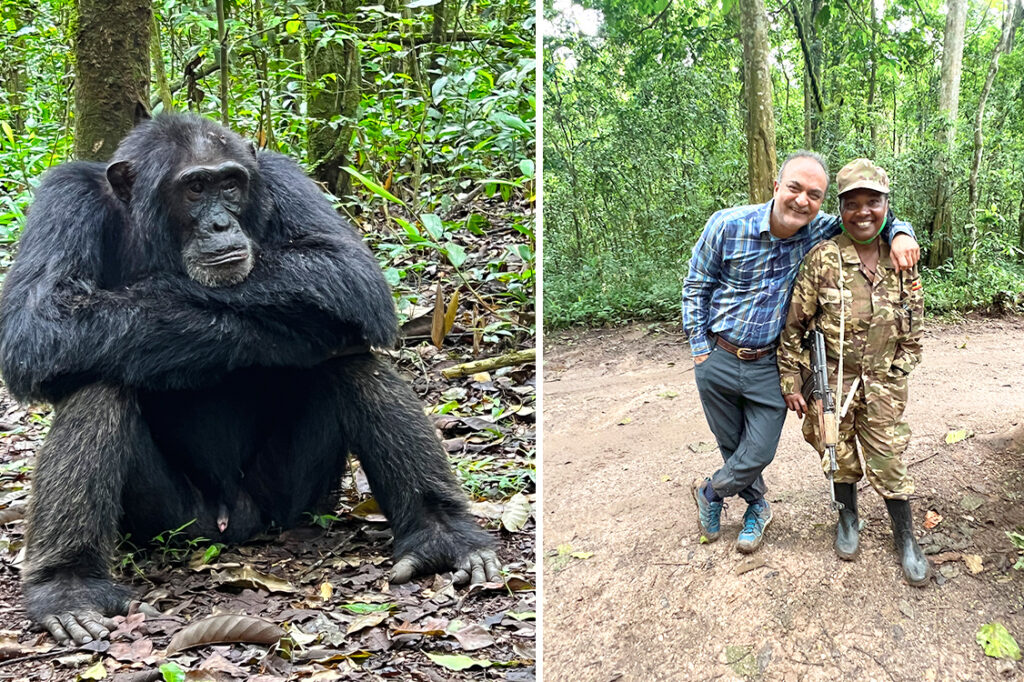
Helping people on the ground eventually comes back to the conservation of these majestic animals. Humans are less likely to cut down the trees for agriculture or resort to poaching. By helping local populations engage in supporting activities, you are helping preserve their habitat and protecting these incredible creatures.
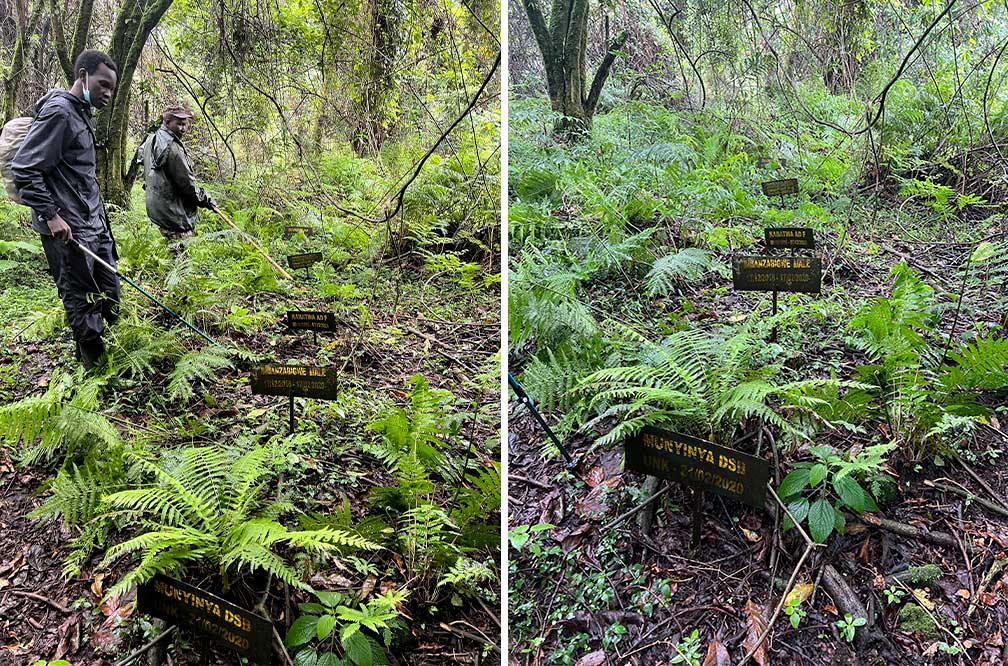
One of the Gorilla Doctors I trekked with took me to a hidden graveyard of a gorilla family that few know about. The family had been wiped out, not by poachers, but by a lightning strike. Three or four of them had been struck dead, and the rest of the family succumbed to heartache.
This was so touching and human-like; while this was tragic, these are the kinds of experiences that help to change our views and increase our appreciation for these marvelous animals.
We strive to provide travelers with the opportunity to fulfill their dreams and facilitate a personal connection with the wildlife we hold so dear.
The best time for gorilla tracking in Rwanda and Uganda is between June to September and December to early February.
Click here for a sample itinerary. Please email hpatil@xplorearth.us for more information to plan your Gorilla tracking adventure.
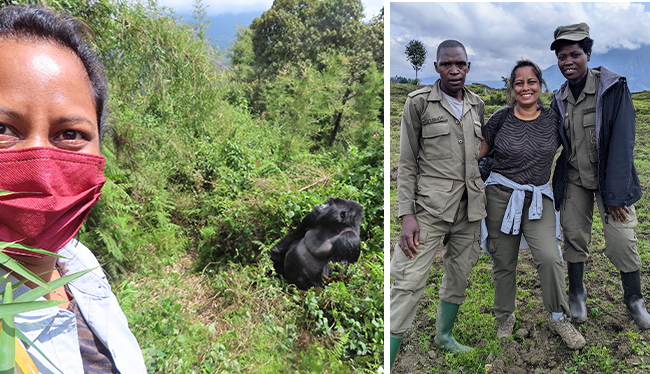
Author: Lavanya Sunkara
Lavanya Sunkara is an award-winning travel writer based in New York. She’s been on more than a dozen safaris in five African countries and had the unforgettable experience of coming face-to-face with a silverback in Volcanoes National Park in Rwanda. Her work has appeared in Travel + Leisure, Fodor’s, Shondaland, USA Today, National Geographic and Lonely Planet, among others. You can follow her travelers on Instagram @nature_traveler and learn more about her on her website.
